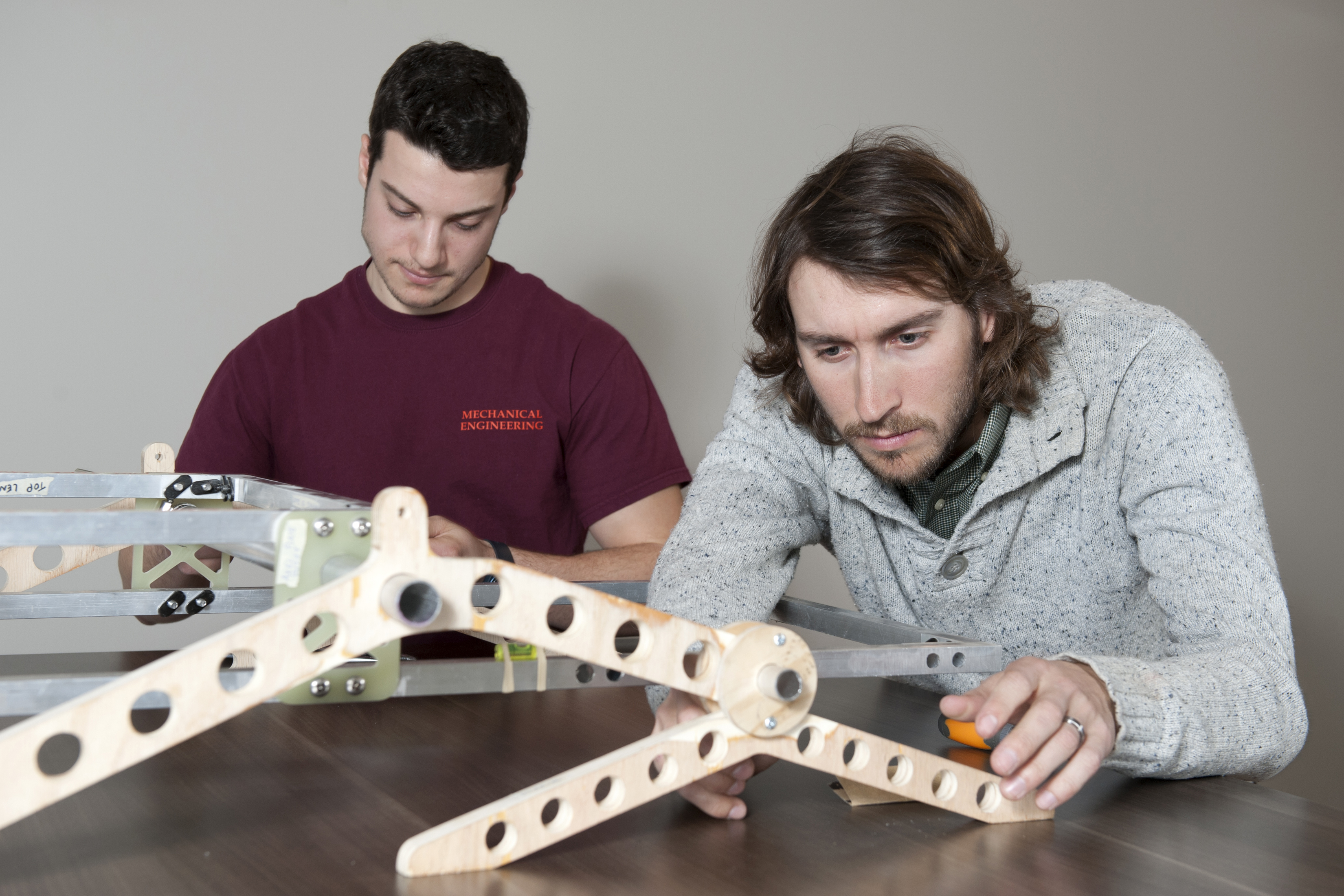College of Engineering student team to compete in NASA-sponsored planetary robotics competition

A Virginia Tech College of Engineering student team is building a six-wheeled lunar robot and will travel to Houston’s Johnson Space Center in June as part of the 2014 RASC-AL Robo-Ops Challenge, sponsored by NASA and the National Institute of Aerospace.
The team is comprises of students from the Department of Aerospace and Ocean Engineering and the Department of Mechanical Engineering. Virginia Tech one of only eight that will travel to the space center, taking with them a self-designed and built rover that will be tasked with collecting rock samples on a faux planetary service. Events at the June 3-5 event are judged for timeliness and task efficiency.
The team’s rover – nicknamed Animus, Latin for intellect -- features a suspension system similar in concept to the NASA rover currently exploring Mars, wheeled robot with a camera for viewing and a robotic arm with which to collect samples such as rocks. Known as rocker-bogie, the system uses six wheels with drive motors. The wheels keep the rover constantly in contact with the ground while traversing myriad terrains, said Animus leader Tom Corona of Saratoga Springs, N.Y., and a senior in mechanical engineering.
“This allows the rover to travel up steep grades over large obstacles and through loose sand,” Corona said, adding that the rover will be constructed from aluminum and fiberglass, both strong yet lightweight. The 3-foot-long, 19-inch-tall Animus will weigh roughly 80 pounds, and will be powered by four 24-volt batteries donated in-part by Cell-Con Inc.
At the competition, only three team members and the group’s faculty advisor will be allowed to attend physical trials, while remaining team members remain at their home base, working remotely. During the event, the rover will collect rock samples via a robotic arm with six degrees of freedom, controlled by an operator in Blacksburg, nearly 800 miles away from Houston.
“Part of the competition includes the necessity to pick up and store rocks of various color and size,” said Corona. “The smaller sized, hard to reach rocks are worth more points, which affected our rock grabbing design. NASA uses the "more" reward: They will place rocks of value in places that tempt teams to break their rover, hence more risk and therefore, reward.”
Animus team members include Jimmy Congleton of Charlotte, N.C.; Jason Duane of Gainesville, Va.; Christopher Gumm of Marlton, N.J.; Joe Haslem of Yorktown, Va.; Kevin Hummel of Millbrook, N.Y.; and Nicholas Socky of Roanoke, Va.; all seniors in aerospace engineering; and Matt Canavra of Sterling, Va., a freshman in general engineering with an intent to enter aerospace engineering studies.
Teams are given $10,000 in support funding from NASA for the cost of rover development, creation of hardware/software, and public engagement and outreach activities. Teams also are tasked with raising additional funds and facilitating with companies such as CellCon, General Cable, and Servo City for project support on their own. Also on task: Education outreach efforts to local communities, including grade schools and the like.
This is the first year that Virginia Tech has made it to the physical competition of the Houston-based RASC-AL event, now in its fourth year. Serving as faculty advisor is Kevin Shinpaugh, an adjunct faculty member with the aerospace and ocean engineering department and director of the Virginia Bioinfomatics Institute’s Information Technology and Computing Services.




